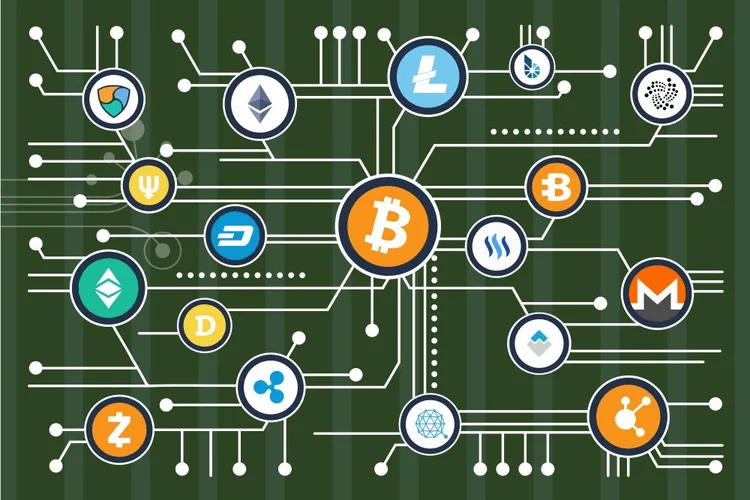This setup works because containerization definition all containers run minimal, resource-isolated processes that others can not entry. Containerization is a form of virtualization the place functions run in isolated user areas, referred to as containers, whereas utilizing the identical shared operating system (OS). One of the benefits of containerization is that a container is basically a completely packaged and portable computing environment.
What Are The Completely Different Containerization Technologies?

Docker developed a Linux container expertise – one that’s moveable, flexible and straightforward to deploy. Docker open sourced libcontainer and partnered with a worldwide neighborhood of contributors to additional its improvement. In June 2015, Docker donated the container image specification and runtime code now known as runc, to the Open Container Initiative (OCI) to assist establish standardization as the container ecosystem grows and matures. Containerization is a method of virtualization that lets you isolate and package deal an utility and its dependencies right into a standardized unit known as a container. Docker provides a platform for constructing, transport, and running containers, enabling builders to create lightweight, moveable, and self-sufficient environments. Additionally, a variety of container safety options can be found to automate threat detection and response across an enterprise.
What Programming Languages Does Docker Support?
The improvement tools are universal and simple to make use of, which further drives the speedy growth, packaging, and deployment of containers on all operating methods. This allows DevOps groups to leverage containers and accelerate agile workflows. Docker, which is now thought-about a synonym for containerization, provides an intensive platform that streamlines the creation, distribution, and execution of applications within containers. The Docker engine is on the heart of Docker’s platform, enabling containers to be packaged and run consistently throughout totally different environments. This weblog submit will cover containerization’s benefits, technical particulars, in style technologies, and container security, empowering you to create future-proof containerized environments. Containerized purposes, significantly those built using a microservices architecture, usually involve complicated interactions and community communication patterns.
Revise: Modifying For Cloud Compatibility
While a DevOps group addresses a technical issue, the remaining containers can function with out downtime. As containerization matures and positive aspects traction because of its measurable benefits, it gives DevOps lots to talk about. Secure coding is the follow of creating software that’s resistant to safety vulnerabilities by applying safety greatest practices, strategies, and instruments early in development.
What Are Resource Limits And Quotas?
- What works on one person’s machine may behave in a different way on a colleague’s laptop—or worse, on a manufacturing server.
- The isolation of applications as containers inherently prevents the invasion of malicious code from affecting different containers or the host system.
- Each machine came with its personal working system, which frequently led to broken packages and downtime as builders tried to deploy software program written on a Windows system on a machine working a Linux system, for example.
- Using the utility mannequin of cloud computing, organizations can flip up containers or scale them down to meet the present want with out buying further capability after they don’t want it.
- It’s also totally open supply, which helped organizations adopt containerization without getting locked in with proprietary distributors.
These tools can provide detailed insights into the efficiency and health of your containers, serving to you determine and resolve issues quickly. This consists of regularly updating and patching your containers, limiting the privileges of your containers, and using container-specific safety instruments. Containerization is a less heavy choice to full-machine virtualization, encapsulating an app in a container with its own environment. A full container load (FCL)[77] is an ISO normal container that’s loaded and unloaded beneath the danger and account of one shipper and one consignee. In follow, it means that the whole container is intended for one consignee. FCL container shipment tends to have lower freight rates than an equivalent weight of cargo in bulk.
DigitalOcean Kubernetes (DOKS) offers a developer-friendly managed Kubernetes service designed to help startups, ISVs, and digital companies efficiently construct, scale, and optimize workloads. With DigitalOcean Managed Kubernetes, you’ll find a way to simply scale workloads, optimize performance with a developer-friendly method, and automate infrastructure and software delivery. Job objects are the equal of cgroups—they enable limiting resources per process (or a gaggle of processes). All these necessities probably must be in a selected version and accessible at the particular path. Also, typically you could must have correct permissions for certain directories and recordsdata.

While Docker focuses on Linux containers, it also supports Windows containers, offering a cross-platform resolution for containerization. Windows Server containers, however, are particularly optimized for the Windows surroundings and supply a path to modernizing legacy Windows purposes through containerization. While virtualization and containerization aim to enhance efficiency and adaptability in managing IT sources, they function at completely different levels (hardware vs. software) and have different functions. Understanding the excellence is essential in choosing the right resolution in your needs. These options are often used collectively to create scalable solutions that are simpler to deploy and handle.
Refactoring, or repackaging, maintains an application’s present architecture and includes solely minor adjustments to its code and configuration. Containers supply a way to encapsulate the appliance and its dependencies, making it easier to maneuver and handle. This also allows organizations to benefit from cloud-native features, especially through the reuse of software parts and growth languages. While not as isolated as VMs, containers do present a level of process and file system isolation.
This makes it simple to package deal and distribute functions, addressing many of the challenges of software program dependencies, versioning, and inconsistencies throughout totally different environments. Because containerization has turn into increasingly prevalent in software program improvement and deployment, understanding and addressing its safety implications is paramount. Though containers offer numerous benefits, they also introduce particular security challenges that must be managed to guard purposes and data effectively. Whether you’re introducing containers as part of an utility modernization effort or building one thing net-new, on this information, we’ll explain the necessities of containerization in a method that’s easy to grasp. We’ll cowl what it is, why it’s turn into so well-liked, and containerization software’s influential function and advantages.
The origins of containerization may be linked to chroot, a Unix system call launched in 1979. Chroot modified the foundation directory of a course of and its children to a new location within the filesystem, creating an isolated environment. However, this was a rudimentary type of isolation, missing the full capabilities of what we now recognize as containerization.

By making certain that your containers output helpful log data, you presumably can trace back issues and fix them more successfully. Containers want to communicate with one another and the surface world, which requires a strong networking setup. Nigel Poulton and Mike Letschin discuss why we are a leader in data protection for the most numerous tech stacks.. The ACTS roller container standards have turn into the premise of containerized firefighting gear all through Europe. Based on these requirements, the first TEU container ship was the Japanese Hakone Maru [de; jp] from shipowner NYK, which began sailing in 1968 and could carry 752 TEU containers.
Docker’s open-source platform offered easy developer instruments and a common packaging technique, establishing an trade normal for containers. Today, organizations use containerization extensively to develop new applications and modernize existing ones for the cloud, improving their agility and operational effectivity. Another characteristic of containers worth mentioning is the flexibility to do runtime security scanning.
The replace migration technique involves retiring the prevailing software and changing it with a new cloud-native answer or a software as a service (SaaS) offering. Organizations looking for to scale back their upkeep burden and concentrate on innovation typically decide to replace an application. Speed to market components into the choice, as the SaaS vendor assumes accountability for new characteristic improvement.
The inception of containerization marked a departure from this model, focusing on lightweight, moveable, and efficient deployment models. Container security is a prime concern, as containers share the host OS kernel, doubtlessly rising the assault floor. Ensuring containers are secure includes a number of layers of defense, together with securing the container pictures, the container runtime, and the host OS. Introduced in 2013, Docker popularized container technology by making it accessible to developers and operators alike. Its easy command-line interface, Dockerfile for building pictures, and Docker Hub, a public registry for sharing container images, have turn into foundational components of contemporary software improvement workflows. Docker’s impact lies in its ability to simplify the creation, deployment, and operating of containers, making containerization a viable solution for applications of all sizes.
Containers are integral to cloud migration and utility administration strategies, allowing organizations to profit from cloud-native instruments and methodologies. But the decision-making course of surrounding utility structure, expertise, and cloud migration methods varies for every group. Both VM and container applied sciences now coexist, usually complementing one another as enterprises navigate the evolving panorama of utility deployment and management. In recent years, a mean 90% of organizations report using containers in manufacturing, as surveyed yearly by the Cloud Native Computing Foundation (CNCF). The population climbs to 95% for these utilizing containers in the proof of concept (PoC), test, and improvement environments. Container orchestration automates the deployment, management, scaling, and networking of containers.
Transform Your Business With AI Software Development Solutions https://www.globalcloudteam.com/ — be successful, be the first!
Learn more: Glucophage
